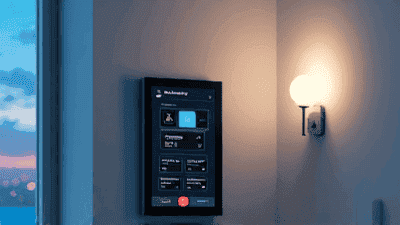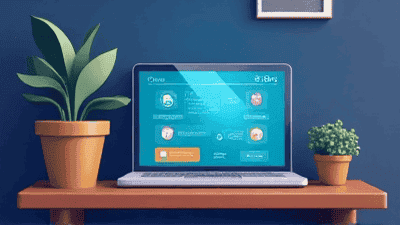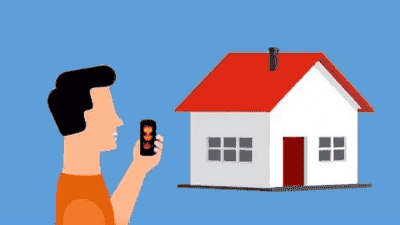
Smart home automation is revolutionizing the way we live, offering convenience, energy efficiency, and enhanced security. For those new to the concept, the idea of automating your home might seem overwhelming. But fear not! This beginner's guide will walk you through everything you need to know about smart home automation, from understanding the basics to choosing the right devices for your needs.
Smart home automation refers to the use of connected devices and systems to automate and control household functions, such as lighting, heating, security, and entertainment, through a central hub or app. These devices communicate with each other and can be controlled remotely via smartphones, tablets, or voice assistants like Amazon Alexa, Google Assistant, or Apple Siri.
The goal of smart home automation is to make your life easier, more efficient, and more secure. Imagine being able to adjust your thermostat while you're still in bed, turn off the lights without getting up, or receive alerts on your phone if a sensor detects movement in your home. These are just a few examples of what smart home technology can do for you.

Before diving into the details of how to set up a smart home, let's explore some of the key benefits that make this technology so appealing:
Convenience: Automating routine tasks, such as turning off lights or locking doors, saves time and effort. With smart home devices, you can control your home with the touch of a button or a simple voice command.
Energy Efficiency: Smart thermostats, lighting systems, and appliances can help you reduce energy consumption by optimizing when and how they operate. For example, a smart thermostat can learn your schedule and adjust the temperature accordingly, saving on heating and cooling costs.
Enhanced Security: Smart security systems, including cameras, door locks, and motion sensors, allow you to monitor and protect your home remotely. You can receive instant alerts and even communicate with visitors or intruders through your smartphone.
Customization: Smart home systems can be tailored to your specific needs and preferences. You can create custom routines, such as having the lights dim and music play when you say, "Movie night."
Increased Home Value: A smart home can be a selling point if you decide to move. Many buyers are attracted to homes with modern, energy-efficient, and secure smart technology.
Remote Access: Control your home from anywhere in the world. Whether you're at work, on vacation, or just away for the day, you can monitor and manage your home remotely using your smartphone or tablet.
Now that you understand the benefits of smart home automation, let’s dive into how to get started. Follow these steps to build your smart home:
Before purchasing any devices, think about what you want to achieve with smart home automation. Some common goals include:
A smart home ecosystem is a collection of compatible devices that work together seamlessly. Some popular ecosystems include:
Choose an ecosystem based on the devices you want to use and the voice assistant that works best for you.
A smart hub acts as the central control point for your smart home devices. While not always necessary, a hub can make it easier to manage and automate multiple devices, especially if they use different communication protocols like Zigbee or Z-Wave. Some popular hubs include:
If you’re starting small, you may not need a hub right away. Many devices can connect directly to your Wi-Fi or voice assistant.
Start with one or two devices to get a feel for how smart home automation works. Here are some beginner-friendly devices to consider:
Once you’ve chosen your devices, follow the manufacturer’s instructions to install and set them up. Most devices come with their own apps that guide you through the process. You’ll typically need to:
One of the most powerful aspects of smart home automation is the ability to create automations and routines. For example, you can set your lights to turn on automatically when you arrive home, or have your thermostat adjust when you leave. Here are some popular automations to try:
Voice Control: Use voice commands to control your devices. For example, say "Alexa, turn off the lights" or "Hey Google, lock the front door."
Geofencing: Set up geofencing to trigger actions based on your location. For instance, have the lights turn on when you’re within a certain distance of your home.
Scheduled Routines: Create schedules for your devices to operate at specific times. For example, have your smart lights turn on at sunset or your coffee maker start brewing at 7 a.m.
Scenes: Create scenes that adjust multiple devices at once. For example, a "Movie Night" scene could dim the lights, turn on the TV, and adjust the thermostat.
As you become more comfortable with smart home automation, you can expand your system by adding more devices and integrating them into your routines. Some advanced devices to consider include:

To make the most of your smart home automation, keep these tips in mind:
Start Small: Begin with a few devices and gradually expand as you become more comfortable with the technology.
Check Compatibility: Ensure that your devices are compatible with your chosen ecosystem before purchasing.
Secure Your Network: Use strong passwords and enable two-factor authentication to protect your smart home from hackers.
Update Firmware: Keep your devices up to date by installing firmware updates as they become available.
Optimize Placement: Position devices like smart speakers and cameras in optimal locations for better performance.
Monitor Energy Usage: Use smart plugs and energy monitoring devices to track and reduce your energy consumption.
Experiment with Automations: Don’t be afraid to try different automations and routines to find what works best for your lifestyle.
Here are some popular smart home devices that are perfect for beginners:

Smart home automation is an exciting and accessible way to enhance your home’s functionality, convenience, and security. By starting small and gradually expanding your system, you can create a smart home that perfectly suits your needs and lifestyle. Whether you’re looking to save energy, improve security, or simply make your daily routines easier, smart home technology offers endless possibilities. With this beginner’s guide, you’re now equipped with the knowledge to take the first step toward building your dream smart home. So, why wait? Start automating today and experience the future of living!